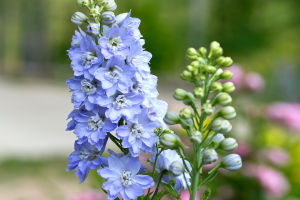Fruit tree management is a year-round endeavor that requires careful attention to detail and a deep understanding of the unique needs of trees during each season.
From the early stirrings of spring to the dormancy of winter, every phase presents opportunities to enhance tree health, boost yields, and ensure the production of high-quality fruits.
Spring: Clean Early for Fewer Pests and Higher Yields
As spring temperatures rise and fruit trees start to wake up, it’s crucial to clean the orchard promptly. This involves removing dead branches, fallen leaves, weeds, and pruned branches from the orchard, as these can harbor overwintering pests and diseases.
At the same time, prune the trees to remove diseased, weak, and overly vigorous branches, and adjust the canopy structure to ensure good air circulation and the ability to transmit light. In Shaanxi’s apple-growing regions, farmers act early each spring, thoroughly cleaning their orchards to effectively reduce the number of pests and diseases, laying a solid foundation for the healthy growth of the trees throughout the year.
Additionally, before the trees start to bud, you can spray a protective fungicide like lime sulfur to create a protective layer that prevents pest and disease invasion.
Summer: Skillful Fertilizing for Plump and Tasty Fruits
Summer is a critical period for fruit tree growth, with new shoots and enlarging fruits demanding a lot of nutrients.
Proper fertilizing is key to ensuring healthy tree growth. Focus on nitrogen fertilizer, combined with appropriate amounts of phosphorus and potassium. For example, in Shandong’s peach-growing areas, farmers apply high-nitrogen compound fertilizer in summer according to the growth stages of the peach trees, promoting new shoot growth.
At the same time, every 10 to 15 days, they spray foliar fertilizers like potassium dihydrogen phosphate to supplement trace elements and improve fruit quality. During the fruit expansion period, adding organic fertilizer can also improve soil structure, providing long-lasting nutrients for the trees and making the fruits taste sweeter.
Autumn: Prune to Shape Trees and Stabilize Tree Strength
After the fruits are harvested in autumn, the trees enter a period of nutrient accumulation. Pruning at this time can adjust the tree shape, improve canopy ventilation and light conditions, promote nutrient backflow, and strengthen the trees.
When pruning, remove overly dense, crossing, and overlapping branches, and shorten excessively long branches to create a well-organized canopy. In Liaoning’s pear-growing regions, farmers use autumn pruning to make the pear trees more structurally sound and increase light energy utilization, storing enough nutrients for the next year’s flower bud differentiation and fruiting.
Additionally, applying base fertilizer in autumn is essential, mainly using organic fertilizer with a small amount of chemical fertilizer to enhance soil fertility and ensure the trees survive the winter safely.
Winter: Multiple Measures to Keep Trees Warm and Safe
In winter, especially in northern areas where temperatures are low, fruit trees are prone to frost damage.
Therefore, it’s important to take multiple measures to protect the trees. You can paint the tree trunks white to reflect sunlight, reduce the temperature difference between day and night, and mitigate frost damage. You can also mound soil around the tree trunks to protect the roots. For young trees, you can use straw curtains or cold-proof cloth to keep them warm. In Hebei’s grape-growing regions, farmers bury the grapevines in soil every winter to ensure they survive the cold safely.
By remembering these four sentences and managing fruit trees scientifically according to the characteristics of each season, farmers can achieve high and stable yields, harvest high-quality fruits, and improve economic benefits.


